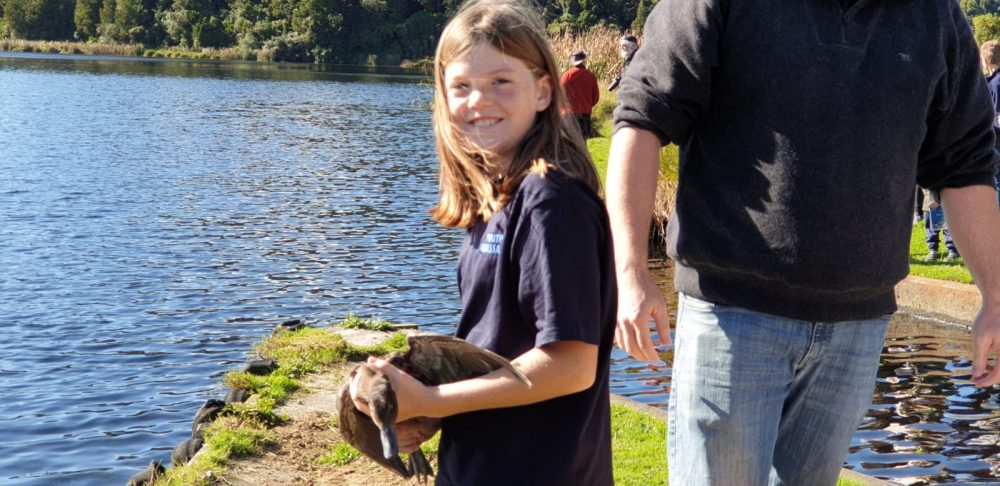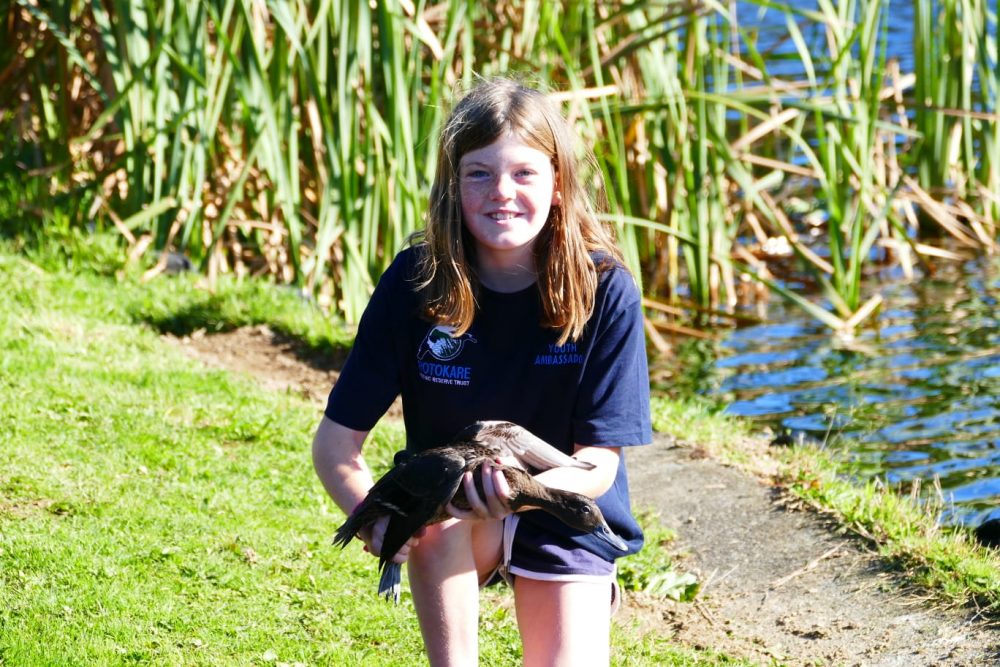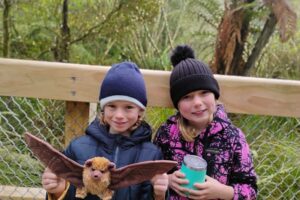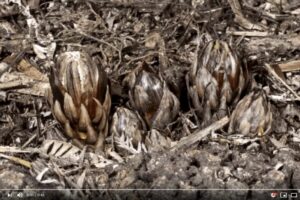By Kora Crawford
Yay! I was with my Rotokare Ambassador friends on the bus. We all hopped out and were so excited. It was a beautiful sunny day, with a very slight wind blowing. We walked down the road past the campground and to the reserve.
The manager handed out some thank you certificates to the people who have worked hard to bring the 52 Pāteke all the way from Christchurch. And also certificates to the kind people that sponsored the Pāteke that were being released at Rotokare Reserve.
Finally we went over to the boat ramp we stood on the grass next to the boat ramp they unloaded the pāteke that were in yellow boxes out of the air conditioned truck. A special Iwi guest blessed the ducks and we all wished them well in their new home. The people who sponsored Rotokare got to release the first ducks then the manager asked “which youth Ambassador wants to release ducks”? We all did! We lined up and all took a turn. Then it was my turn, I was very excited! We had to hold the duck by its legs and hold its chest really gently. I walked over to the side of the lake and bent down then it zoomed out of my hands into the water and swam away. Then a peaceful feeling ran down my back.



About the bird:
Did you know that Pāteke are arguably New Zealand’s rarest duck, with only 2,000 – 2,500 ducks left across New Zealand–to put it into perspective, there are more kiwi in Taranaki than Pāteke worldwide! A crepuscular (i.e. twilight) duck, this species has restricted populations in the wild, being sensitive to introduced mammals (especially feral cats and mustelids) and habitat loss. Captive breeding has saved the species and helped their reintroduction into their home ranges.
About Rotokare:
Rotokare means “Rippling Lake” and has been described as a Taranaki jewel, an important biological hotspot in the region. Rotokare Scenic Reserve is situated 12 km east of Eltham, South Taranaki. The reserve consists of a 230ha forested hill country catchment, including both lowland forest (mahoe, tawa and rewarewa dominated), and swamp forest (pukatea and kahikatea dominated), this along with a 17.8ha natural lake. Rotokare is home to many native plant, tree, insect, lizard, bird, and fish species
The distinctive feature of Rotokare is that it is a predator-proof sanctuary with a 2m high and 8.2km long pest-proof fence. The fence design has elements that keep pests from getting back in. A programme at Rotokare has eradicated twelve species of pests .
Being pest-free means there are great opportunities for nature to recover and thrive. It also sees the re-introduction of special native animals that would have once lived here. We first released North Island Brown Kiwi back into the reserve and have since brought tīeke / saddleback, popokatea / whitehead, hihi / stitchbird, toutouwai / robin, tītipounamu / rifleman, and pāteke / brown teal to Rotokare. We hope to bring tuatara, giant wētā, takahē and other species in the near future.







